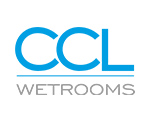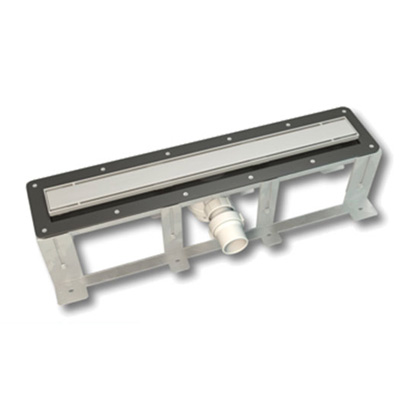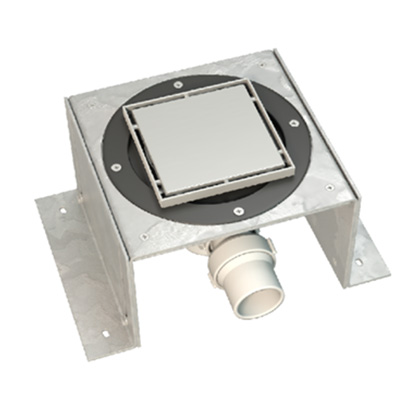This guide looks at all the types of wetroom flooring, careful installation as well as drainage considerations when choosing your wetroom flooring type.
Do You Need Special Floor for a Wetroom?
No, you don’t need a special type of floor for a wetroom. Most flooring you could use in a bathroom or even a kitchen can be used in a wetroom. However, you’ll want to consider elements such as:
- Waterproofing
- Non-slip qualities
- Affordability
- Material quality
- And more.
Elements like these will impact the flooring you choose, and the design of your wetroom.
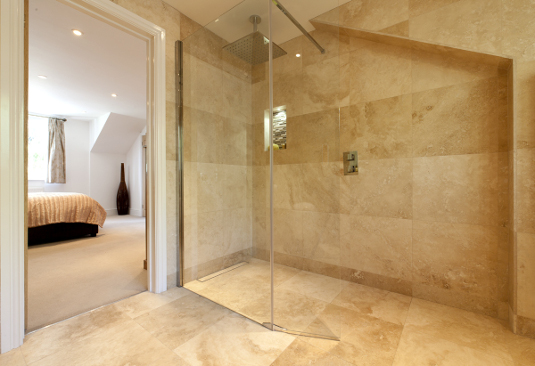
What Materials Can Wetrooms Be Constructed On?
Wetrooms can be constructed on timber and concrete floors.
For timber floors, a “dec” or tapered board is installed within the shower area above the ply supported joists, where the original floorboards have been removed. The built-in gradient creates the fall towards the drain.
On solid (concrete) flooring, the falls are created within the screed or if the wetroom is being installed into an existing property, the original concrete floor can be manually removed from the shower area and replaced with newly poured screed (and levelling compound) that creates the new falls.
Timber Flooring Products
Modular Wet-Floor System
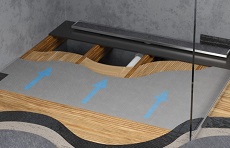
The Modular Wet-Floor system is a unique concept in wetroom technology that can be used in a number of configurations to create a wetroom on a timber floor.
View More
Linear Wet-Dec
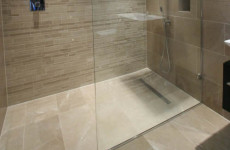
The Linear Wet-Dec pre-formed shower base has been developed specifically by our team at CCL Wetrooms to allow the installation of a wetroom on a timber floor.
View More
Wet-Dec
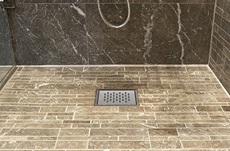
The Wet-Dec is a pre-formed shower base developed specifically to allow the installation of a wetroom onto a timber floor. Available in a range of sizes.
View More
Wetroom Flooring Materials
Appropriate flooring is a vital component of a wet room, particularly because it needs to fulfil the very important non-slip function. Choose wet room floor tiles that are practical and safe underfoot, such as natural stone tiles which are far more suitable than slippery, high-gloss tiles.
However, it is possible to have certain wet room flooring materials designed with a slip resistant finish to ensure maximum safety.
Depending on the type of wet room flooring material you would like to use, prices will vary, but investing in quality tiles will make all the difference to the longevity and efficiency of your wet room. Just make sure they’re properly grouted to avoid seepage, and most importantly, ensure that the whole wet room area is “tanked” or waterproofed.
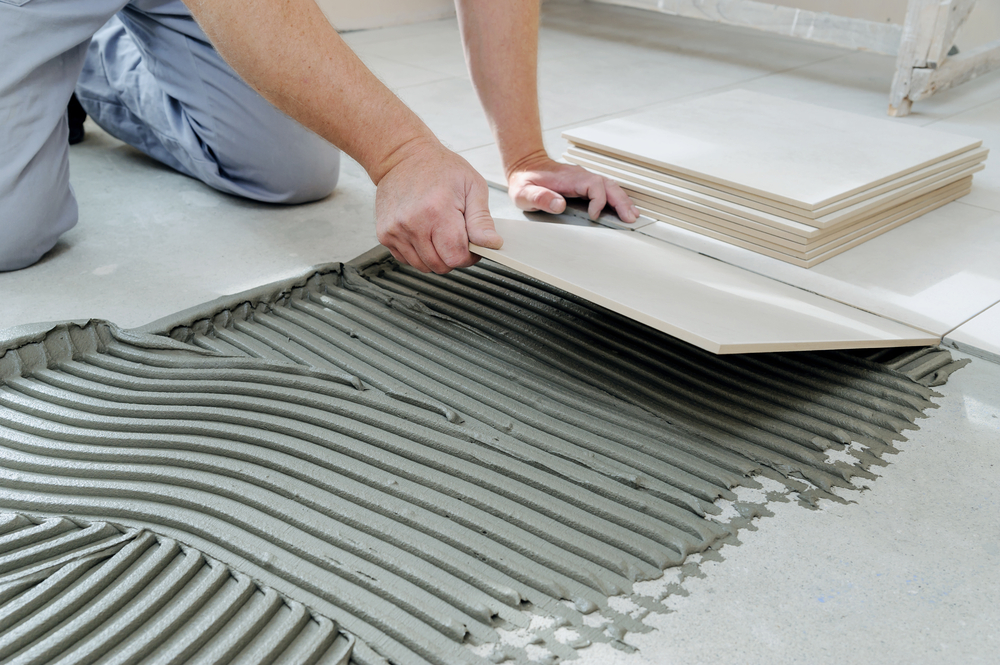
What Wetroom Flooring Materials Can I Use?
When it comes to planning your wetroom, special attention should be afforded to the type of flooring – that is, the materials you use – in its final design. As there are many options available, the final finish can look and feel different, depending on preferences.
Popular wet room flooring materials include:
- Tiles – Natural stone and porcelain tiles are becoming the most popular choice in wet rooms as they give a beautiful, contemporary, and hardwearing finish.
- Vinyl – Cost-effective and available in a wide range of colours and styles, vinyl is a common choice for wet room flooring outside of the shower area. It’s also water resistant and softer than other tiles.
- Rubber – Durable, warm underfoot, and available in a range of patterns, colours and textures, rubber is a great option for slip resistant wet room flooring.
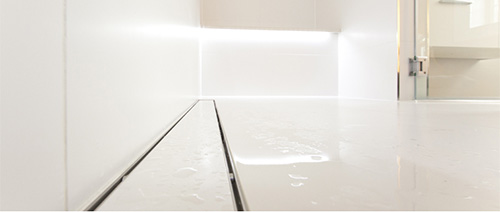
Explore Our Wetroom Products
CCL Wetrooms' extensive range of wetroom supplies include wetroom systems for timber floors, systems for solid floors and waterproofing membranes.
What Is the Best Wetroom Flooring?
Designing a wetroom involves careful consideration of the types of materials needed to ensure it not only looks great, but also functions well. There is no right answer for what the best wetroom flooring is, as it’s dependent on your needs and tastes.
For many homeowners and commercial property owners, wetrooms are a stylish and more attractive alternative to traditional bathrooms, while for others, they present a much more practical and efficient space. Whatever the reason for installing a wetroom, flooring is a key consideration. As wetrooms are designed as one cohesive space with the shower space being on the same area as the remainder of the wetroom, it’s important to choose a flooring type and design that works everywhere.
Ultimately, the best wetroom flooring will be the one most suitable to the space at hand, whether that’s vinyl, tile or other.
Vinyl Flooring
As mentioned above, vinyl is often a go-to option when looking to make a wetroom safe and slip-free. As well as being stain resistant, the material is usually cut from a large flexible sheet, making it easy to install.
When fitted properly and securely, it’s also completely waterproof, acting as a barrier for the floor. Its versatility means it won’t look out of place in your home, as it comes in several different colours and styles.
If perhaps the feel of the floor is a factor you want to take into consideration, vinyl offers a soft and spongy feeling when compared to tiles, meaning a less harsh surface under your bare feet.
Durability is key in spaces of high traffic, so ensuring you have a high-quality material for your wetroom floor will give you more peace of mind that the area is slip-resistant.
Rubber flooring
Similar to the advantages of vinyl flooring, opting for rubber flooring in your wetroom will also improve safety and decrease the risk of any slips.
The springy texture of rubber flooring has anti-slip properties that create a comfortable underfoot feeling, while also offering versatility in its design.
Rubber flooring comes in a variety of colours, allowing you to tailor the look of your wetroom to the colour and texture of your choice, whether that be a more vibrant and bold style or a neutral and simplistic look.
The material is an ideal option for wetrooms, as it is extremely durable against moisture and humid environments, making it resistant to stains and mould.
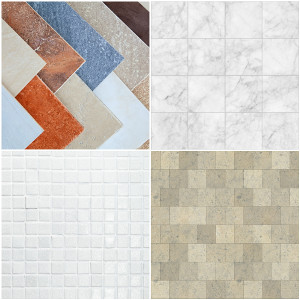
Floor Tiles in a Wetroom
Tiled floor finishes have a strong reputation and that’s not only for creating a stylish, timeless look and feel in a wetroom. Tiles are versatile, coming in a range of different materials, styles, shapes and sizes, offering more creative choice in how the final wetroom is designed. Aesthetically, a tiled wetroom finish can make a room look more attractive, especially as it’s upgrading the style of a space used frequently.
As well as wetroom flooring, tiles are also used for the walls of a wetroom. This can complete the look, helping a space feel symmetrical and well-considered. It also removes other limitations, like matching floor design with walls.
Tiles are also popular for their longevity; if cared for, a tiled finish can be hardwearing, standing the test of time.
If tiles are your top choice, but cost efficiency is still in the back of your mind, it’s important your plans are done well in advance. For example, ensuring drain locations are in the ideal and most effective position will ensure they match the preferred size of tile. Doing this will minimise any tile cutting that might be needed, therefore saving on cost and potential wastage.
Types of Wetroom Tile
There is a range of suitable materials that can be used when designing and planning your ideal wetroom flooring, from porcelain to mosaics. Every material will add something different to the space. So, in order to get the most value from a wetroom, it’s worthwhile studying the types of tiles available.
Popular wetroom tiling materials include:
- Ceramic – Made from clay, kiln-fired and finished off with a customisable coloured surface, ceramic tiles are a popular option for wet room tiling.
- Marble – This natural stone comes in a variety of designs and colours and can add a unique, luxurious feel to your wet room. Marble is more expensive than other tile materials, but the aesthetic appeal is often worth the cost.
- Limestone – Another natural stone, limestone is typically cheaper than marble and can create a rustic and traditional feel in a wetroom.
- Mosaics – Mosaic glass tiles are much smaller than standard tiles, and can be costly, but they elevate the style and sophistication of a wet room. Available in a wide range of colours and sizes, they allow for a great deal of creativity, but they are most suited to traditional style wet rooms with a four-way fall (square) drain.
You can find out more about wet room tiles by reading our comprehensive wet room tiling guide.
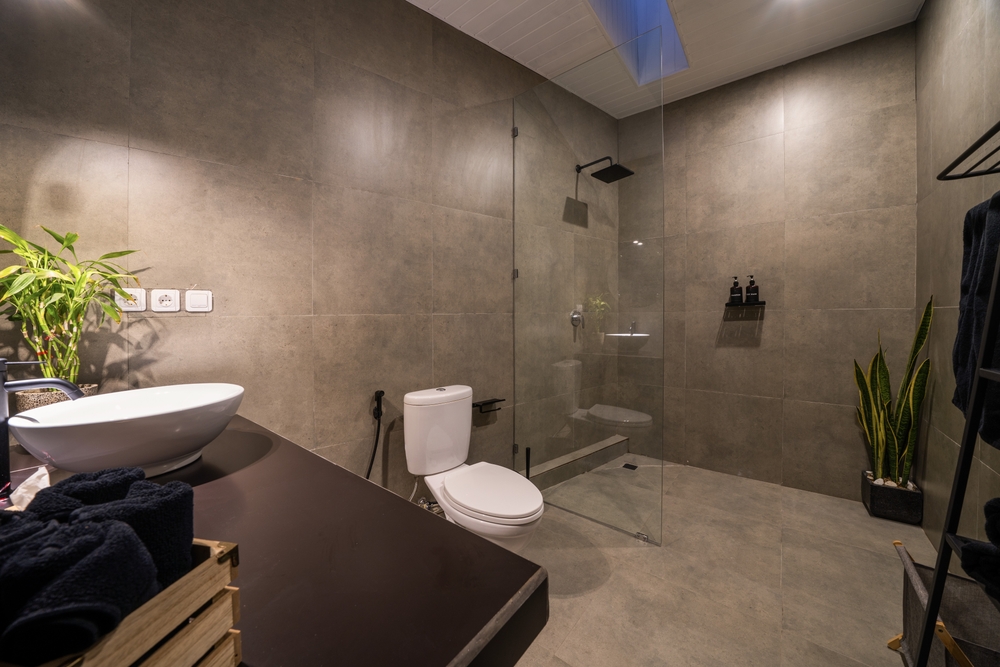
Drainage Products for Tiled Floors
If you’re using mosaic tiles, you’ll need something like CCL’s Wet-Dec which has a built-in four-way fall which provides a consistent gradient, needed for mosaic and smaller tiles. If you’re looking at large format tiles, then you’ll want the Linear Wet-Dec which has been designed specifically so that tiles don’t need a diagonal cut.
Dangers of Poor Tiling
For all the positive aspects that tiles possess, they are unfortunately not indestructible. Therefore, it’s essential that fitting and installation is done properly.
It’s important to understand the potential issues that can occur if tiles are fitted improperly.
Some of the issues you may experience due to poor tile installation are:
- Mould – when water damage and damp begins to appear, mould can begin to form and create a hazardous area that could have an impact on health.
- Delayed tile damage – tiles that are not fitted properly are more likely to crack or become uneven over time, leaving possible safety or trip hazards.
- Water leaks – the expectation when installing a wetroom is complete waterproofing, but when tiles are not fitted and sealed securely to the wall or floor, it can cause structural and water damage.
Avoid any dangers by having your tiles professionally fitted. You can find out more about wet room tiles by reading our comprehensive wet room tiling guide.
Non-Slip Flooring for Wetrooms
The perfect wetroom flooring needs to do more than work well aesthetically. It should also be a safe and secure surface for walking on, giving you complete peace of mind that the risk of a slip-related accident is greatly reduced.
Anti-slip flooring tiles are the perfect, non-slip, safety solution for a wetroom. These are tiles made from materials that are textured rather than smooth help to increase the friction underneath your feet, meaning you’re less likely to slip. It’s good practice to check the slip ratings of tiles you’ve decided on for a wet room to understand if extra precautions are needed.
If the floor tiles you wish to use in your wet room design are smooth and more prone to slipperiness in wet conditions (for instance porcelain) anti-slip coatings are an additional non-slip option. Aside from tiles, other optional wetroom flooring materials such as vinyl and rubber work very effectively as non-slip wetroom flooring materials.
When identifying slip ratings, levels range from R9 – R13. On this scale, R9 is considered poor, whereas R13 offers the best at slip prevention in wet environments. For a wetroom, anything over R12 should be the minimum as the R rating is designed for soled shoes, not bare feet.
Wetroom Drains
Drains are an essential part of wet room design and installation, and the style and look of the drain required (a linear or square drain), is often the best place to start. The type of drain needed for your wet room will also depend on the floor build up. If your wet room has been installed on a timber floor, drainage systems such as the Modular Wet-Floor System or the Linear Wet-Dec should be used. These use a horizontal or vertical trap that can be fitted anywhere within the central section of the trough (making it simple to avoid joists and other such obstructions).
Alternatively, wet rooms installed on solid floors will require shallow drainage systems such as the Linear Screed Drain which is suitable for use on shallow concrete floors. The Linear Screed Drain is the shallowest drain available on the market with a minimum height of only 67mm – specifically designed for installation on concrete or screeded floors. It is among the wide range of drainage systems we supply at CCL Wetrooms.
Linear Screed Drain
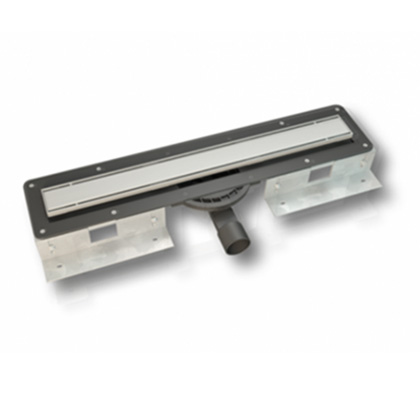
- Concrete floors
- Screeded floors
- Concrete slabs
- Planks, block and beam floors
Waterproof Wetroom Flooring Materials
Wet rooms need to be watertight, so getting the appropriate waterproofing materials installed is crucial. There are several ways to tank a wetroom, but the most effective method is having a membrane such as RIW Tilesafe installed underneath the tiles. This is a self-adhesive membrane that provides a consistent waterproof layer underneath wetroom tiles. It has a thick rubberised waterproof layer that incorporates a glass fibre mesh on one side.
Waterproofing a wetroom is no easy task, so it’s important that you seek advice and materials from professional wet room waterproofing specialists. At CCL Wetrooms we have over 30 years’ experience in the waterproofing industry and we work with a large list of clients to supply and install wetroom tanking systems in their residential projects.
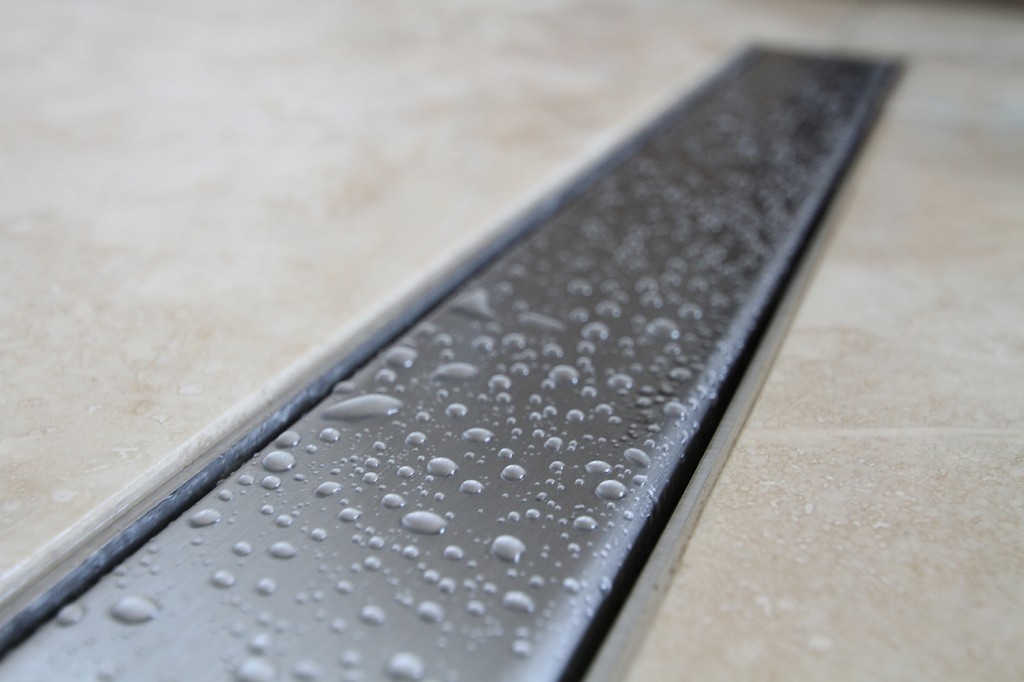
Other Wetroom Materials
The following wetroom materials are optional extras that many people choose to have installed as part of their bathroom re-design:
- Glass screens – These are not essential for a wet room, but sectioning off the shower area can help to prevent any mirrors or additional items from getting wet. It also adds a sophisticated touch to the design of a wet room and allows you to create different zones.
- Under floor heating –Many people choose to have underfloor heating installed to keep their feet warm and to dry out the flooring after a wet room has been used. If this is something you opt for, please consult with the fitter to ensure that your choice of flooring is not impacted by the heating’s temperatures and wattages.
For further advice on choosing the best materials for your architectural or commercial wet room project, get in touch with our expert team at CCL Wetrooms.
Looking To Get Inspired? Explore Wetroom Flooring Ideas
Visit our design gallery to get ideas not only about wetroom flooring, but the whole space. See the full picture and plan your next project with help from CCL.
Please note, CCL Wetrooms products aren’t compatible with vinyl or rubber floor coverings.
